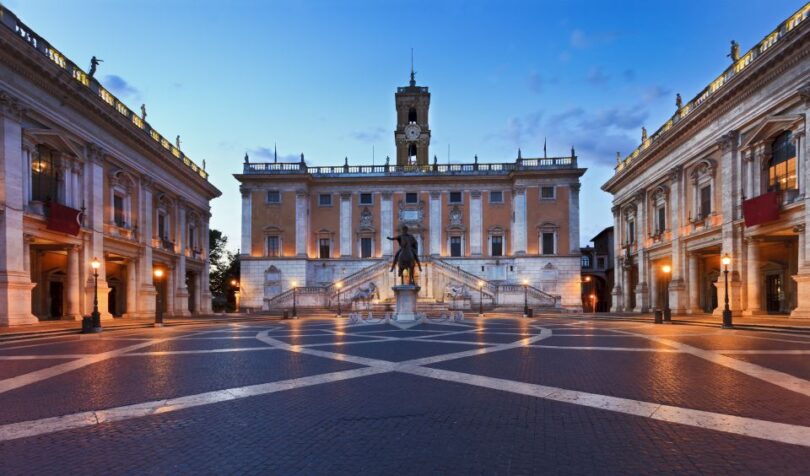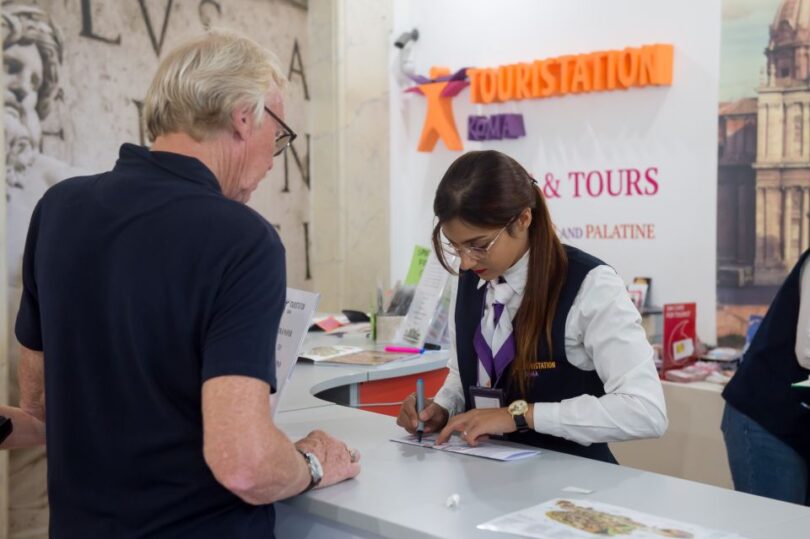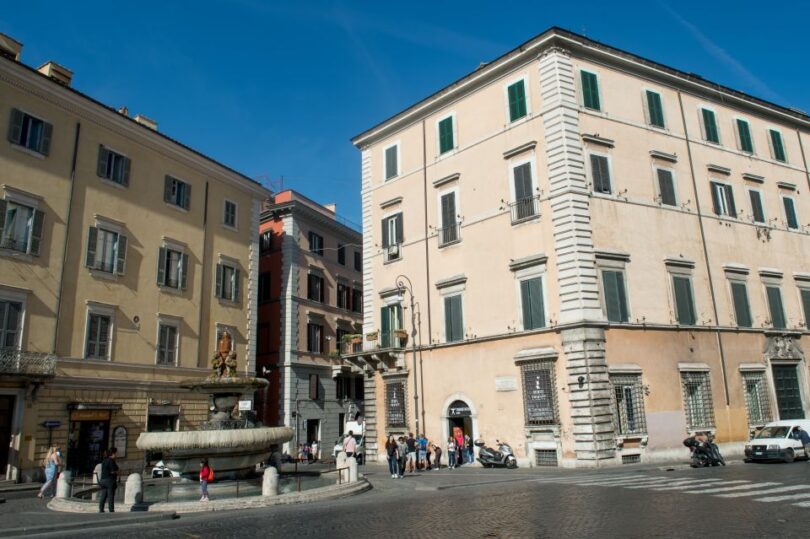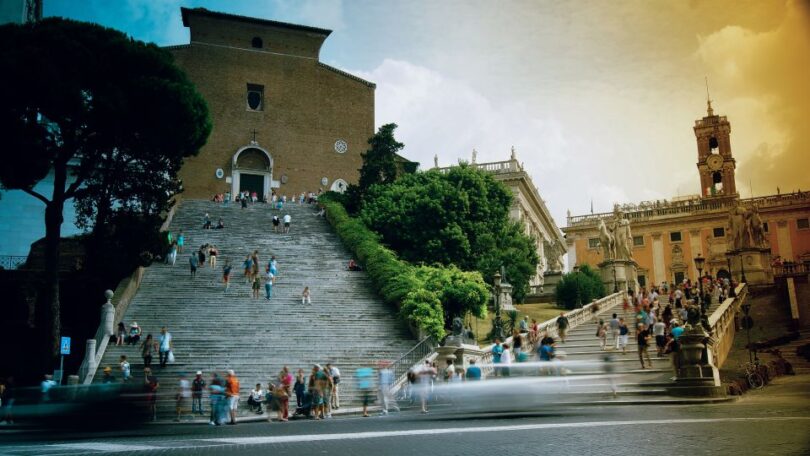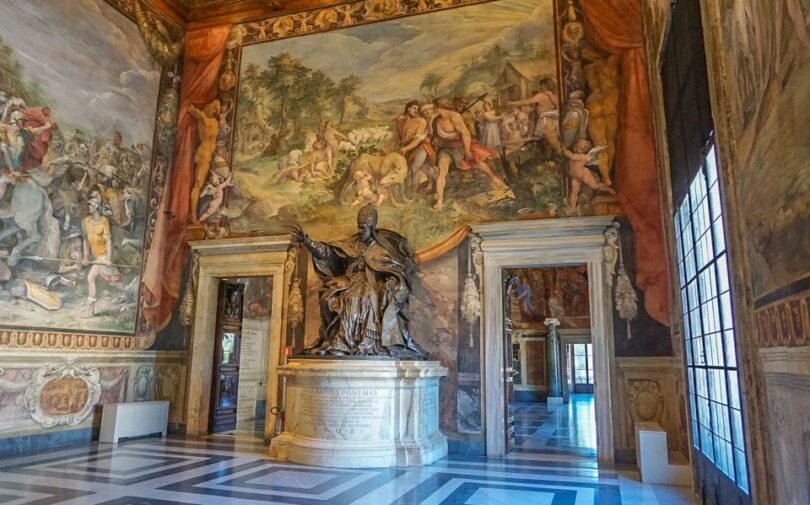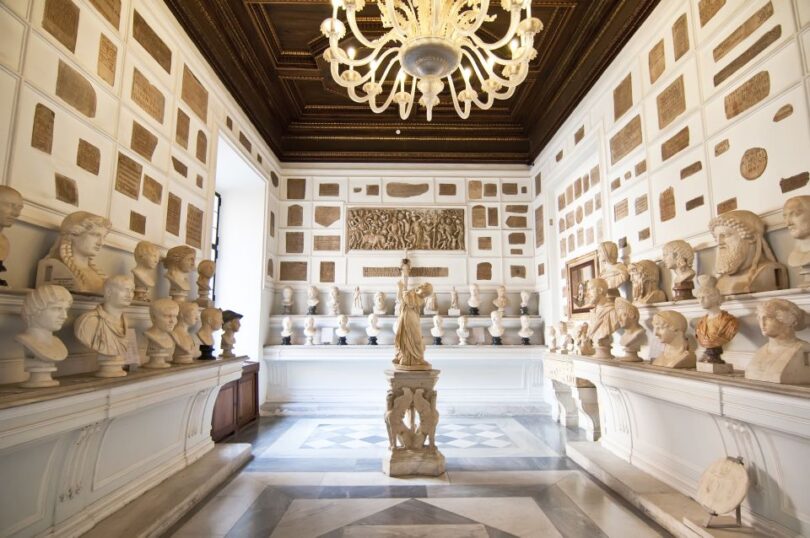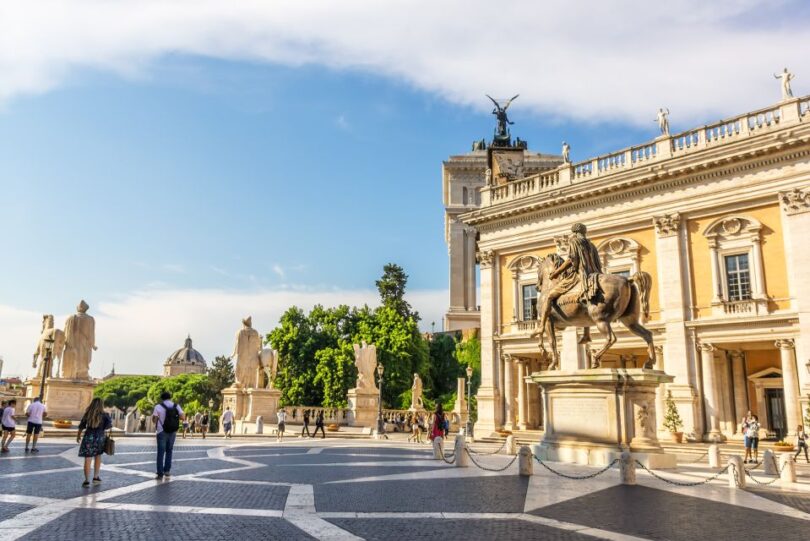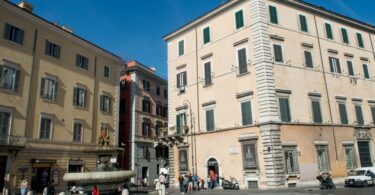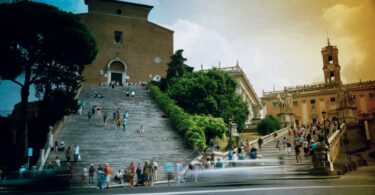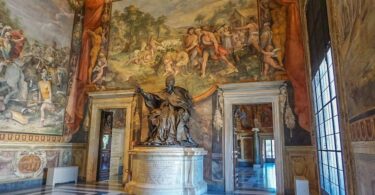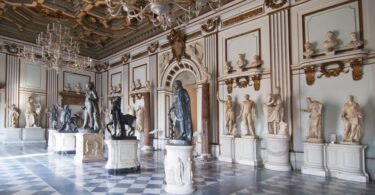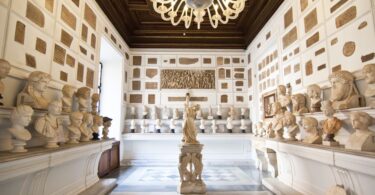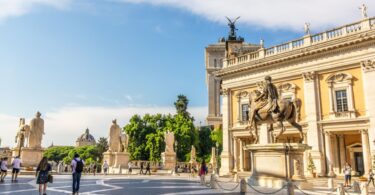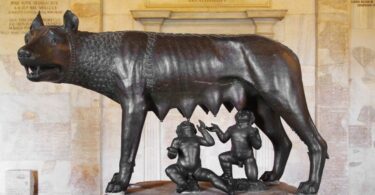1.003 Reviews
from €36.00 EUR
Organized by: TiqetStation SRL
Dive into the heart of Rome with us as we embark on a journey through time, unveiling the profound history and rich heritage of the Roman Empire. Our expedition is enriched by a captivating multimedia video, a downloadable Rome City App Audioguide, and a visit to the esteemed Capitoline Museums.
Our journey begins with a step back in time. We invite you to discover the intricate history and remarkable treasures of ancient Rome. Your immersion into the past starts with a compelling multimedia video introduction, breathing life into the era of the Roman Empire.
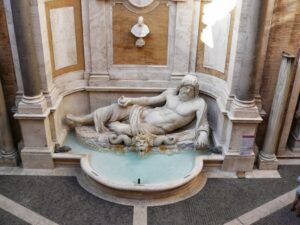
Capitoline Museums Tickets – 2025
The Capitoline Museums: A Tapestry of Timeless Art
Established in 1734, the Capitoline Museums proudly hold the title as the world’s first public museum, setting the foundation for the modern concept of museums worldwide. Situated atop Capitoline Hill, one of Rome’s famous Seven Hills, this remarkable institution offers visitors not merely a journey through art but an immersive experience into Rome’s rich historical tapestry.
Step into the Capitoline Museums and you’re immediately transported through centuries of artistic brilliance and ancient storytelling. Here, the extensive collection covers a vast array of classical artwork, sculptures, coins, and artifacts, each piece meticulously curated to highlight Rome’s expansive and influential past.
Undoubtedly, the museum’s crown jewel is the iconic Capitoline Wolf sculpture, an evocative bronze statue symbolizing the legendary origins of Rome. The sculpture captures the mythological she-wolf nurturing Romulus and Remus, the twin brothers whose legendary story is deeply intertwined with Rome’s very existence. Standing before this compelling masterpiece, it’s hard not to feel a profound sense of connection to the origins of one of the world’s most influential civilizations.
However, the Capitoline Wolf is just the beginning. The museums boast masterpieces such as Caravaggio’s hauntingly beautiful “St. John the Baptist” and Bernini’s captivating “Medusa”. Visitors will also marvel at the imposing equestrian statue of Marcus Aurelius, an exceptional bronze work dating back to antiquity, symbolizing Roman strength and leadership.
Visitors have the unique opportunity to explore multiple buildings interconnected through captivating underground passages, offering a sense of adventure and discovery at every turn. The Palazzo dei Conservatori and Palazzo Nuovo, the two main buildings, each hold their own distinctive treasures. From elaborate frescoes and intricate mosaics to significant archaeological finds like the colossal marble head of Constantine, each room provides a deeper understanding of Roman culture and art.
Beyond the artifacts, the museums themselves embody Rome’s historic beauty. From the spacious terraces, you can enjoy spectacular panoramic views of the Roman Forum, giving visitors an extraordinary perspective on the ruins below, further enriching the museum experience.
The Rome City App Audioguide: Your Personal Tour Guide
To enhance your exploration, we include an Audioguide for Rome, downloadable on your mobile phone. This audioguide features more than 170 points of interest, enabling you to learn all about the city, its remarkable landmarks, and its fascinating history.
The Happy Hour Option: A Delightful Culmination
Add a dash of leisure to your cultural exploration by opting for our happy hour. Savor a cocktail and snacks while relishing the panoramic views of Rome. This optional experience is a splendid way to conclude your journey through time.
Meeting Point
The journey begins at the Touristation office, located opposite the Vittorio Emanuele II monument. The office is conveniently situated on the right-hand side, with a charming small fountain in front of it. Come, join us on this captivating journey, and let’s explore the indelible imprints of Rome’s rich history together.
- Entry with reservation to the Capitoline Museums
- Hosted entry (if requested)
- A 25-minute multimedia video about ancient Rome
- The Rome City app audioguide, downloadable on your smartphone
- Access to the exhibition “Domiziano Imperatore. Odio e Amore” (July 13, 2022 – January 29, 2023)
- Cocktail and snack during happy hour (if option selected)
- Guided tour
- Food and drinks
- Pickup from the hotel
- Audioguide for Capitoline Museums
Free cancellation up to 1 day before your visit.
The Capitol is the spiritual centre of Rome, just as it was the religious centre of ancient Rome. It stands on a low hill, the Capitoline (one of the seven hills on which the city is built), and its terraces command a vast panorama with a view of the remains of ancient Rome and the buildings of medieval and modern Rome in a wide sweep.
The Capitoline Hill, seized by the Romans from the Sabines, was the scene of the most important historical events which were the glory of ancient Rome. On its two crests stand the Arx Capitolina (at present the site of the Church of Aracoeli), which was a rock dedicated to June, and the Temple of Jupiter Optimus Maxims (the remains of which can be seen in the Museum in the Palazzo dei Conservatori). Between the two summits, in the hollow which is now the Piazza del Campidoglio, there was in ancient times the “Asylum”, that is to say the place made accessible to the plebs by Romulus, the first King of Rome, so that they might dwell there in safety. In the course of the centuries, the hill underwent various transformations and alterations, until it took on its present aspect which is mainly the result of Michelangelo’s plan.
The Piazza Campidoglio has on its three sides the Senator’s Palace (in the centre), the Palazzo dei Conservatori (on the right), and the Palazzo dei Musei (on the left). It is reached from Piazza Venezia, leaving on the left the Victor Emmanuel Monument and the remains of an ancient Roman house, and then ascending the central ramp from Via del Teatro Marcello.
This great ramp, leading up to the Piazza, was designed by Michelangelo, like all the rest of the square, to the commission of Pope Paul III. On the way up, there is on the left the Monument to Cola di Rienzo by Masini (1887), commemorating the sacrifice of this son of the people who paid with his life for his dream of restorating to Rome the glory and might of the Republican period. Nearby, in a cage, is kept a she-wolf, symbol of Rome.
At the top of the ramp leading to the Capitol, there are, on either side, the statues of the Dioscuri, Castor and Pollux, with their horses, together with other statues, including that of Constantine and the so-called Trophies of Marius, i.e. the trophies of arms taken from the Barbarians.
The whole square and the buildings surrounding it were architecturally arranged by Michelangelo between 1546 and 1550. He partially transformed the already existing Senator’s Place, connecting it with the square by means of a large staircase (in part altered and reduced in the execution). He then built the two palaces at the sides (the Palazzo del Conservatori and the Palazzo del Musei), enlivening their faOdes with a powerful order of pilasters, and making them diverge slightly towards the centre in order to bring the palace in the blackground seemingly nearer.
The geometric pattern on the pavement of the square, conceived in the form of expanding and crossing elliptical shapes was also designed by him, and har-monises well with the architecture of the whole. In 1535 Michelangelo took the statue of Marcus Aurelius from the Lateran and set it up in the centre of the square; it is the sole remaining example of the equestrian statues of the Roman imperial period. There are various theories and legends to explain the reasons which made it possible for this monument to come down to us. The main reason, however, is to be found in the fact that it was long thought to represent the Emperor Constantine, the first to allow the practice of the Christian religion.
In the space created by the divergence of the stairs leading to the Senator’s Palace, Michelangelo had a fountain placed with statues representing the Goddess of Rome in the centre, and the Nile and Tiber on either side.
The statue of Rome Triumphant was originally a statue of Minerva, but Pope Sixtus V, who during his pontificate had started a vigorous campaign to revitalise Christianity, threatened to have the Capitol demolished, unless all the statues dedicated to pagan deities were removed. Nevertheless he agreed to have this statue transformed into that of Rome Triumphant, after the goddess’s sword had been replaced by a cross.
The Senator’s Palace: This is at present the official seat of Mayor of Rome. It was built over the ancient Tabularium, erected in the time of the Republic to house all the laws written on “tabulae” (whence the name). The Senator’s Palace was built on it in the 13th century (the visit to the Tabularium will be described later).
Above the Senator’s Palace rises the 16th century Capitoline Tower: it still contains the Patarine Bell which has been rung for many centuries only on particularly important occasions, such as, for instance, the anniversary of the foundation of Rome (April 21). At the top of the tower a cross was placed as the symbol of the Christianity of Rome. The interior of the Senator’s Palace contains many rooms, of which the most important are: the Hall of the Municipal Council, also called the Hall of Julius Caesar because of a statue of Caesar, dating from 150 A.D.; the Hall of the Banners; the Hall of the Municipal Committee; the Hall of Cleopatra (from the statue of that name).
The Palace of Capitoline Museum: this is to the left of the Senator’s Palace. It is so called because it contains a rich and interesting Museum of classical art.
from €11.00 EUR
Duration: 1 Hour
Seller: Tiqets
138 Reviews
from €35.00 EUR
Seller: Tiqets
5.178 Reviews
from €60.00 EUR
Validity: 2 Days
Organized by: Touristation Rome
68 Reviews
from €19.00 EUR
Duration: 50 Min.
Seller: Tiqets
from €72.00 EUR
Duration: 4 Hours
Organized by: Topbike Rental & Tours
1.734 Reviews
from €90.00 EUR
Duration: 3 Hours
Seller: Viator
from €99.00 EUR
Duration: 3 Hours
Seller: Viator
311 Reviews
from €153.00 EUR (Group Price)
Duration: 3 Hours
Seller: Viator
4.218 Reviews
from €16.20 EUR
Duration: 1.5 – 2 Hours
Seller: Tiqets
from €75.00 EUR
Duration: 3 Hours
Organized by: Fat Tire Tours
527 Reviews


